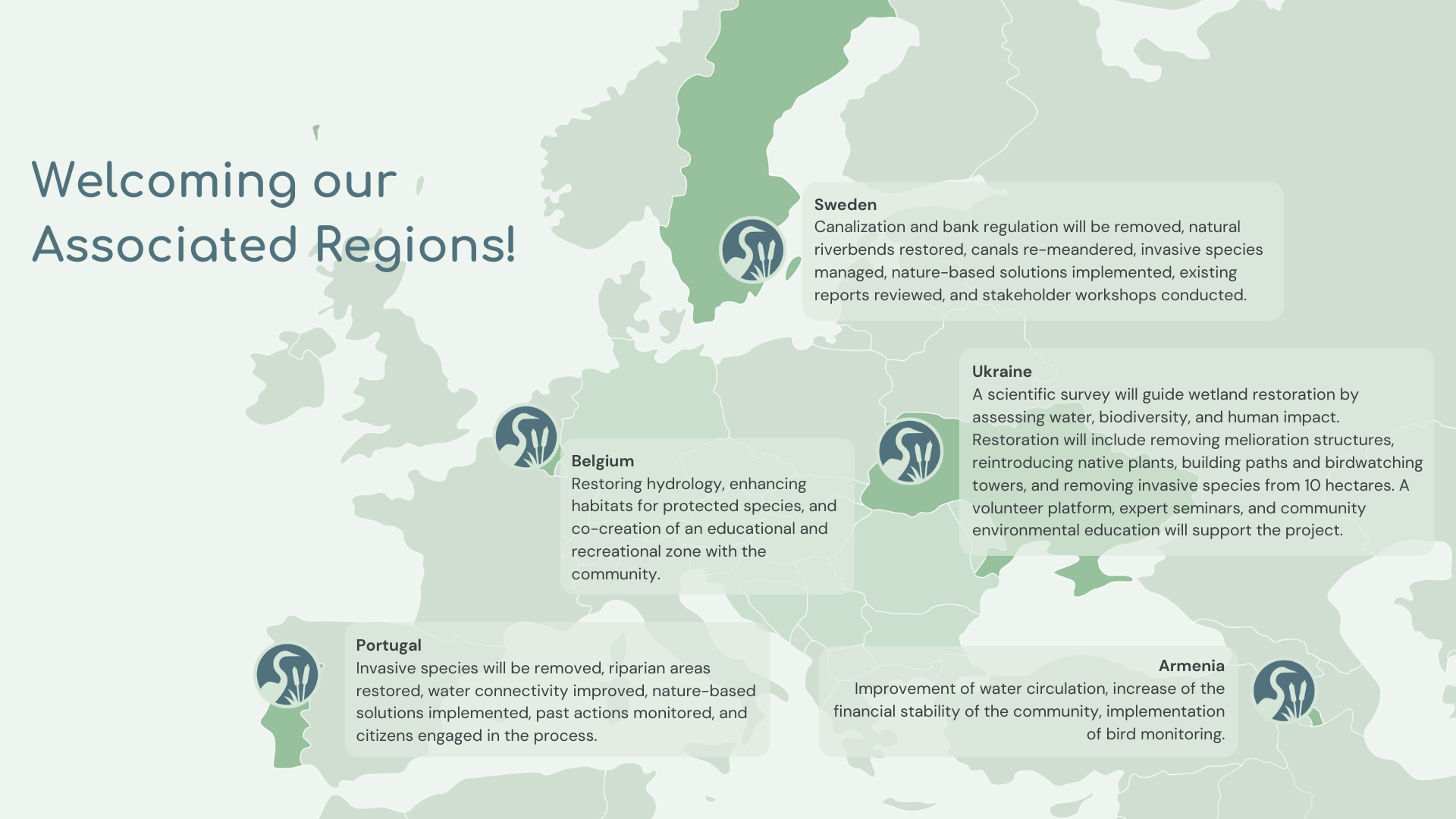Implementation sites
Enisala Channel, Romania
Enhancing Water Circulation and Connectivity in Secondary Channels and Babadag Lake during Low Water Levels

Site features
GRĂDIȘTEA / BASCEALÎC area is a component of the Danube Delta Biosphere Reserve, located on the western shore of the Razim – Sinoe aquatic complex, near the village of Enisala in Tulcea County, Romania.
Anthropogenic interventions carried out in the past, associated with both agricultural activities and fish farming, have contributed to the degradation of water circulation in the channels network and the loss of small lakes from Grădiștea / Bascealîc area (IS4).
This phenomenon, amplified by the high levels of nutrient concentrations and high summer temperatures, leads to frequent algal blooms, which generated a series of ecosystem disturbances, from the decrease in water quality, fish mortality and/or the development of unwanted species, to the loss of some recreational/tourist functions of the area.
Moreover, if no measures for restoring / improving water circulation will be adopted within the near future, the existing problems will spread throughout the entire area, which is currently one of the most prosperous habitats for Umbra krameri.
Ecosystem
The whole area is included in the Natura 2000 network, more specifically in the avifaunistic special protected area, namely ROSPA 0031- Danube Delta – Razelm – Sinoe Complex, and in the community importance site ROSCI 0065 – Danube Delta. The most important species occurring in the area is the European mudminnow (Umbra krameria), which has been categorized as a vulnerable species at national as well as Euopean level (IUCN Red List, Habitats Directive, Bern Convention). This species does not migrate, and during the last 25 years, only a small number of specimens have been reported in ponds and canals of the study area, revealing that the population has significantly decreased due to eutrophication and the reduction of favorable habitats. In addition to the capacity of IS4 to provide a habitat for endangered species, a series of commercially valuable fish species such as Carassius gibelio or Esox lucius prefer the area for breeding, making it a key place for maintaining both environmental and economic sustainability. Another feauture of the Site are the reed stocks of Phragmites australis, which grows here on acidic and/or salinized organic soils and brings huge harvesting potential.
Facts & Figures

The ecological status of a complex ecosystem of over 2000 ha will improved

Revitalization of breeding habitats for 2 fish species with commercial value

Habitat extension for 1 European level vulnerable fish species (Umbra krameri),

Significant economic potential - over 9oo tones of reed can be harvested within the demo-site region
Challenges
The main challenge will be to perform interventions without causing a negative impact on endangered species. For this purpose, the technical solution to be implemented will be evaluated from the environmental impact perspective, and during the execution period, at least one of the INCDD experts will supervise the work stages that will be subcontracted.

Location
Danube Delta Biosphere Reserve, Romania,
Size
Restoration activities are demanding since the entire surface gathers around 2379 ha and, from a raw estimation, a volume between 16 000 and 20 000 m3 is necessary to be excavated in order to restore/improve the connectivity and water circulation in this demo-site.
GRĂDIȘTEA / BASCEALÎC area has preserved a high biodiversity with a very important hydrological and biochemical role at the local and regional level.
Existing projects
ꕥ Restore4life will be the first project, ever implemented in this area.
Restore4life implementation plans
ꕥ Creating a topographic 3D model in the Grădiștea / Bascealîc area (IS4);
ꕥ Joint analysis of the proposed solutions with the experts from the consortium;
ꕥ Preparation of technical documentation;
ꕥ Obtaining the necessary approvals;
ꕥ Obtaining the authorizations;
ꕥ Completion of the steps necessary to contract a specialized company;
ꕥ Execution of restoration works;
ꕥ Reception of restoration works.
ꕥ Evaluation of ecosystem improvement status, comparing pre-monitoring vs. post-monitoring data, obtained after performing a holistic assessment of the demo-site.
Involvement of the community
The final solution for the restoration of the Grădiștea / Bascealîc area (IS4) will be the result of joint brainstorming and decision processes performed by the Restore4Life experts, based on a series of data and decision support tools, with the involvement of the local community, the fishermen’s association in the targeted area, academia and the economic agents with activities in the area, therefore involving the quadruple helix principles and strengthening the interconnectivity nexus between the helix elements.
Expected Impact
The implementation of the restoration actions will improve the drainage regime and ensure a high degree of water exchange at the level of entire study surface, namely 2370 ha of the Grădiștea / Bascealîc area.
All these will successively contribute to an improvement of the water quality, the revitalization of the breeding areas for various fish species – conservation of ichthyofauna biodiversity, the increase of the fishing potential both in the Grădiștea / Bascealîc area and in the Razim-Sinoe aquatic complex and the facilitation of new tourist activities/opportunities.
At the same time, there are good chances that the restoration of the area will contribute to the increase in the number of overnight stays in the accommodation units from the neighboring villages, therefore developing a new branch of the blue-economic development in a green manner.
Site gallery







